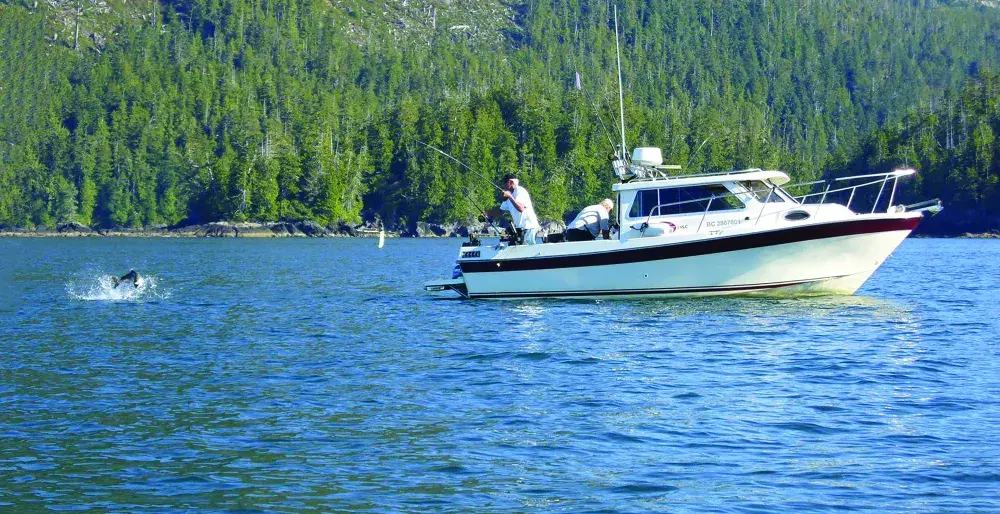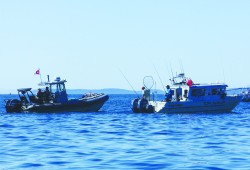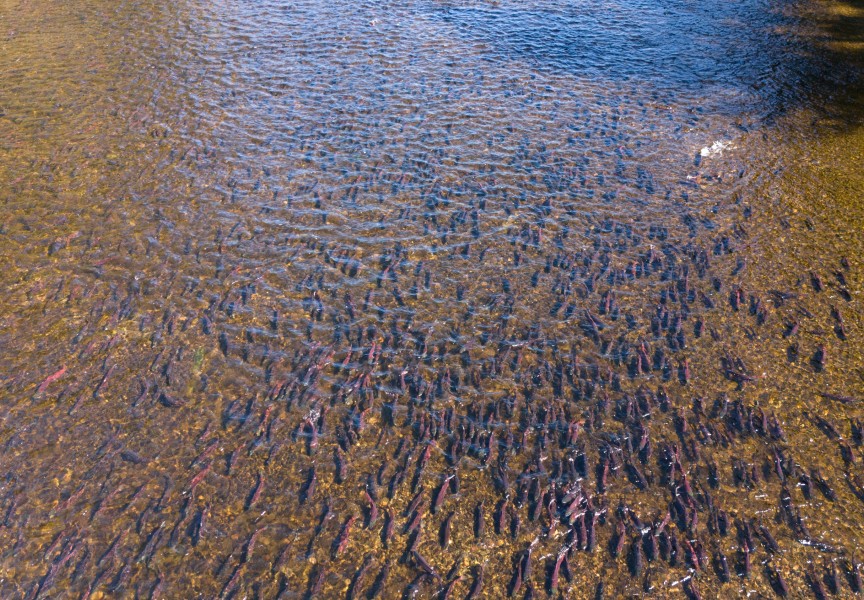This year intensive projects are underway off Vancouver Island’s coast to take a closer look at the health of salmon species - including research into the controversial angling practice of catch and release.
Over $3 million in government funds are being directed to the Sport Fishing Institute of B.C. to collect more data on chinook and coho stocks off southeastern Vancouver Island and around Bamfield’s coast. Announced in late November, the province states these research projects will support threatened Pacific salmon stocks by making the recreational fishery more sustainable. The projects are being financed by the $146-million B.C. Salmon Restoration and Innovation Fund, 70 per cent of which is backed by Fisheries and Oceans Canada, with the remainder covered by the provincial government.
The region around the southern Gulf Islands, Saanich and southwestern Vancouver Island “show a consistent lack of adequate and up-to-date data” on salmon stocks, according to an email from the B.C. Ministry of Water, Land and Resource Stewardship, “including non-retention management measures and rising costs associated with volunteer efforts.”
For this reason a test fishery is being planned for the island’s southeast coast, which entails professional charter guides and technicians catching chinook to collect biological samples. This is intended to provide information on migration timing and the routes that hatchery-raised fish take.
The Sport Fishing Institute of B.C. is managing the project with $1.6 million in government funding. Lance Weber, the institute’s director of Best Practices Projects, said one goal of the test fishery is to decrease stress on wild-raised salmon by exploring the potential for hatchery fish supporting a recreational fishery. Hatchery fish can be identified by a clipped adipose fin, which is located near the tail.
“The idea of a test fishery is to try to better understand information on what’s going on out on the water in terms of fish that are potentially being released during the recreational fishery,” said Weber. “What stocks are they? What are the mark rates? What approximate size?”
The hope is to find ways for an industry that contributes $1 billion annually to B.C.’s economy to continue without pushing more wild stocks to the brink of extinction. According to the province, approximately 9,000 people live off the sports fishing industry, many of whom are in coastal communities.
But conservation measures have led to more area closures in recent years, leading some to wonder if hatcheries could be part of a solution for rec fishing.
“Access and opportunity have been severely restricted in the current environment,” said Weber. “If we were allowed to harvest these hatchery fish and have fisheries focused on them, there would be a lot more access and opportunity available.”
With the window of opportunity narrowing for anglers to keep salmon, catch and release has become a common practice for sports fishers. For years the Tofino Resort and Marina hosted the Fish for the Future Tournament in the summer, where competing fishers only keep their catches long enough for a boat with a scale to come and weigh them before the salmon are released back into the ocean. This derby raised money for salmon conservation efforts, but questions remain around how many of the fish survive after being released.
Another government-funded project managed by the Sports Fishing Institute aims to put coho salmon “under the microscope” through a research project in Bamfield over the next two years. The $1.7-million study examines how interactions with recreational fishing gear affects the health of coho, using researchers from the University of British Columbia who will release their own findings.
After being caught with recreational gear, the salmon spend 10 days in a holding tank for a metabolic assessment. The study aims to examine 480 coho, following the same process that was undertaken at the Bamfield Marine Sciences Centre over the last two years on chinook salmon.
“It is essentially like taking a chinook to the cardiologist and putting it on a treadmill to better understand how it absorbs oxygen and what that means to its metabolic rate,” explained Weber of the 10-day holding tank examination, which assesses wound progression and other effects of encounters with recreational gear.
For years the Nuu-chah-nulth Council of Ha’wiih Forum on Fisheries has questioned why catch and release is still permitted, given the threatened state of many salmon stocks.
“What is the policy, or procedure, that allows that to happen? Catching and release in ocean fisheries is not benign, there’s a mortality to it,” asked Jim Lane, acting program manager for Uu-a-thluk, to DFO staff during a Council of Ha’wiih meeting back in July. “We’re talking about preserving and conserving WCVI chinook and other chinook populations, and then you have resorts in Tofino having catch-and-release derbies for chinook when the area is closed for retention.”
While the Sport Fishing Institute awaits more data on how much this practice is harming wild salmon, so far Weber says some things have become evident.
“The best possible thing we can do from a best practices standpoint is if we’re not intending to harvest or retain the fish that’s on the line, handle that fish as little as possible,” he said. “If there are areas that have high numbers of smaller fish that an angler might know they’re going to release, avoid those areas.”
So far Fisheries and Oceans Canada has declined to present a clear position on catch and release, besides just allowing it to continue. Meanwhile reporting catches is mandatory for anyone to have a recreational licence, but anglers are only required to disclose their activity on the water for a one-month period specified by the licence. Any halibut, chinook or lingcod that are caught at any time must be reported through the National Recreational Licencing System.
During the Council of Ha’wiih meeting last summer, Harold Amos from Ehattesaht questioned why his nation’s rights-based fishery faces more stringent reporting requirements.
“What I would appreciate is DFO doing the same service to the sports sector as they expect of our T’aaq-wiihak fleet,” he said.
“The method of monitoring sporties is not acceptable to our people,” stressed Council of Ha’wiih Chair Cliff Atleo during the meeting. “It’s totally inadequate, as a matter of fact.”
“[T]he fish resorts up and down the coast who are said to be regulated, but what’s going on there? Exploitation,” added Uchucklesaht Ha’wilth Clifford Charles.
“[F]isheries officers are the front lines promoting compliance, building awareness and enforcing the rules and regulations under several federal acts,” wrote a DFO spokesperson in an email referencing monitoring in the sports fishery. “Using a risk-based approach, we deploy fishery officers around British Columbia, where necessary, to respond to priority issues using a variety of methods, including aerial, ocean, river, on-the-ground, night and undercover patrols, while also pursuing complex and large investigations.”















